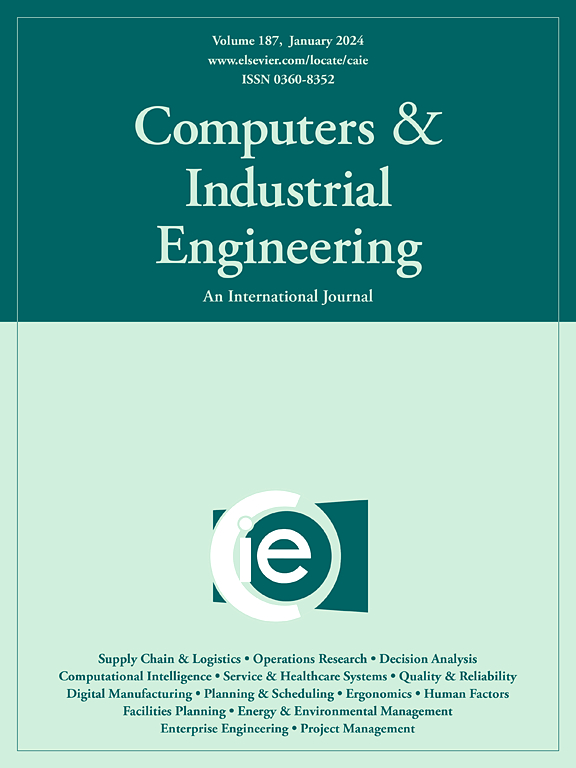A neural network adaptation on neutrosophic triplets for robotic assembly line optimization in smart manufacturing
IF 6.5
1区 工程技术
Q1 COMPUTER SCIENCE, INTERDISCIPLINARY APPLICATIONS
引用次数: 0
Abstract
The decision-making process in smart manufacturing often involves complex, multi-criteria scenarios characterized by uncertainty and conflicting objectives. Traditional decision-making approaches face inherent limitations in managing indeterminacy, ensuring robustness, and addressing computational complexity, which compromise their reliability in dynamic manufacturing environments. This study introduces an innovative framework that integrates the VIKOR method, neural networks, and Neutrosophic Triplets (NTs) to address these challenges. The proposed approach is specifically designed to optimize robotic assembly line configurations by balancing key objectives such as cost, operational efficiency, and sustainability. VIKOR’s compromise solution methodology is leveraged to evaluate trade-offs between group utility and individual regret, while Neutrosophic Triplets enhance the management of indeterminate information. Neural networks provide scalability and adaptability, enabling dynamic ranking refinement and reducing computational overhead. Additionally, a ranking strategy based on occurrence pattern analysis ensures robust and reliable decision-making outcomes. Validated through a case study on robotic assembly line optimization in a smart manufacturing environment, the framework demonstrates its effectiveness in improving productivity, adaptability, and sustainability. These results position the smart VIKOR method as a powerful and scalable solution for addressing the complexities of modern manufacturing systems.
智能制造机器人装配线优化的神经网络自适应嗜中性三联体
智能制造中的决策过程通常涉及复杂的、多准则的场景,这些场景具有不确定性和目标冲突的特点。传统的决策方法在管理不确定性、确保鲁棒性和处理计算复杂性方面面临固有的局限性,这损害了它们在动态制造环境中的可靠性。本研究引入了一个创新的框架,该框架集成了VIKOR方法、神经网络和中性粒细胞三重体(NTs)来解决这些挑战。该方法旨在通过平衡成本、操作效率和可持续性等关键目标来优化机器人装配线配置。VIKOR的折衷解决方案方法被用来评估群体效用和个人后悔之间的权衡,而中性三胞胎则增强了对不确定信息的管理。神经网络提供可伸缩性和适应性,支持动态排序细化并减少计算开销。此外,基于发生模式分析的排序策略确保了稳健和可靠的决策结果。通过智能制造环境下机器人装配线优化的案例研究验证了该框架在提高生产率、适应性和可持续性方面的有效性。这些结果将智能VIKOR方法定位为解决现代制造系统复杂性的强大且可扩展的解决方案。
本文章由计算机程序翻译,如有差异,请以英文原文为准。
求助全文
约1分钟内获得全文
求助全文
来源期刊

Computers & Industrial Engineering
工程技术-工程:工业
CiteScore
12.70
自引率
12.70%
发文量
794
审稿时长
10.6 months
期刊介绍:
Computers & Industrial Engineering (CAIE) is dedicated to researchers, educators, and practitioners in industrial engineering and related fields. Pioneering the integration of computers in research, education, and practice, industrial engineering has evolved to make computers and electronic communication integral to its domain. CAIE publishes original contributions focusing on the development of novel computerized methodologies to address industrial engineering problems. It also highlights the applications of these methodologies to issues within the broader industrial engineering and associated communities. The journal actively encourages submissions that push the boundaries of fundamental theories and concepts in industrial engineering techniques.
 求助内容:
求助内容: 应助结果提醒方式:
应助结果提醒方式:


